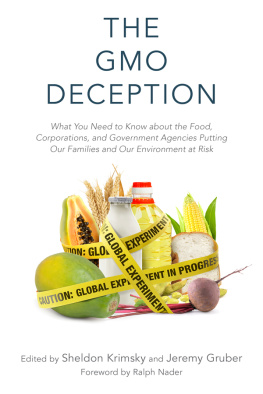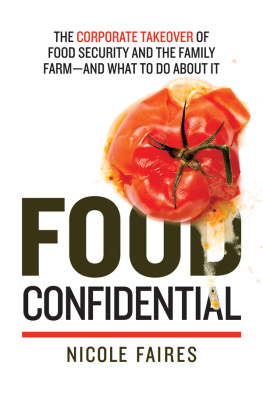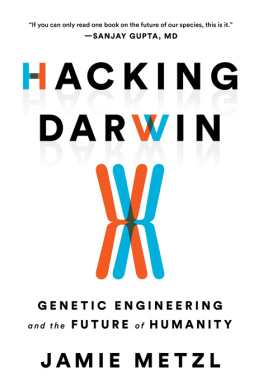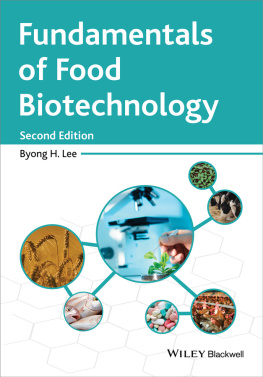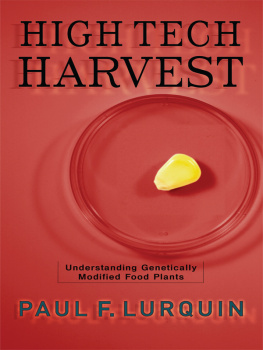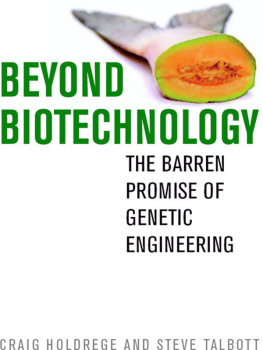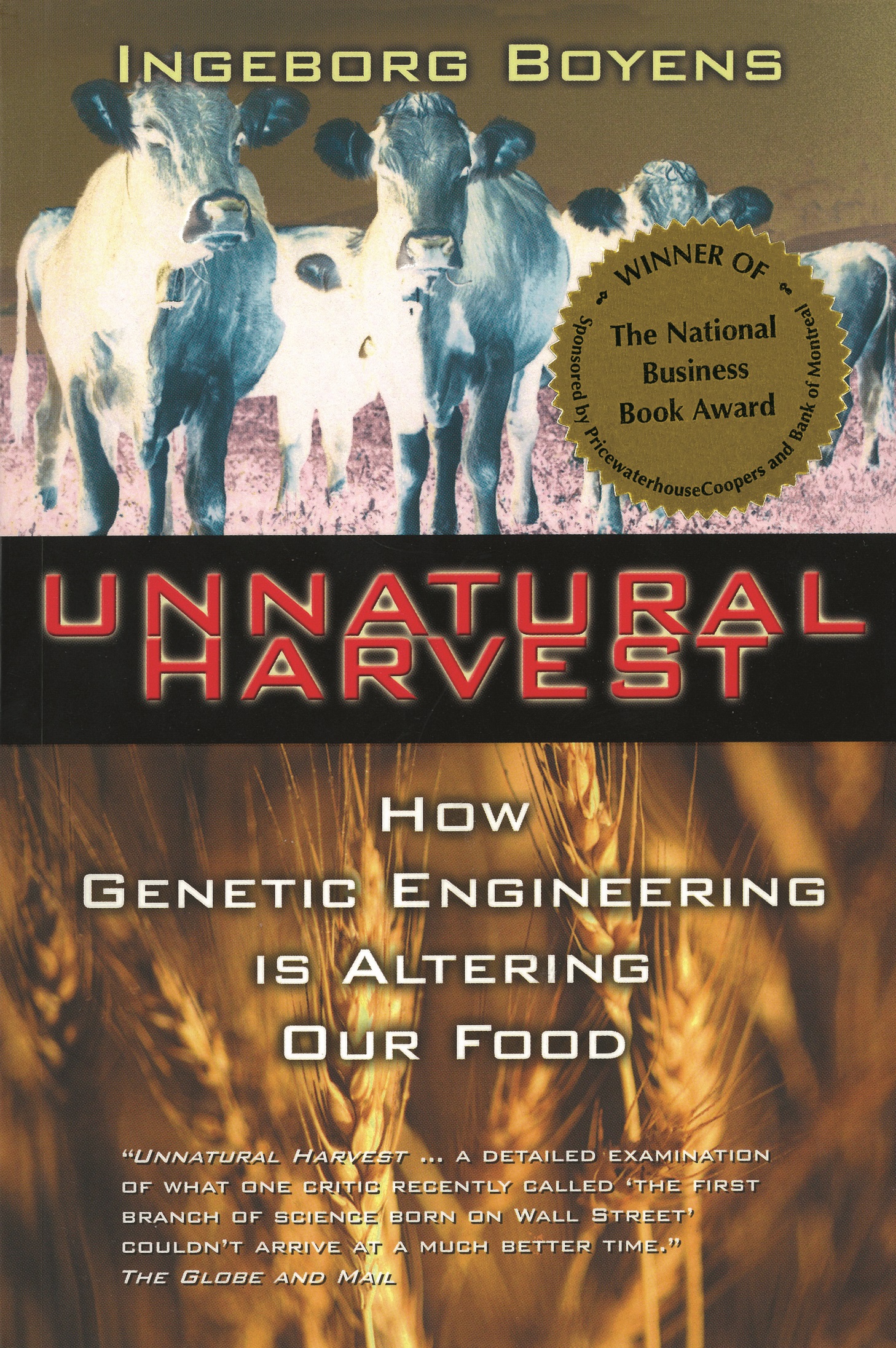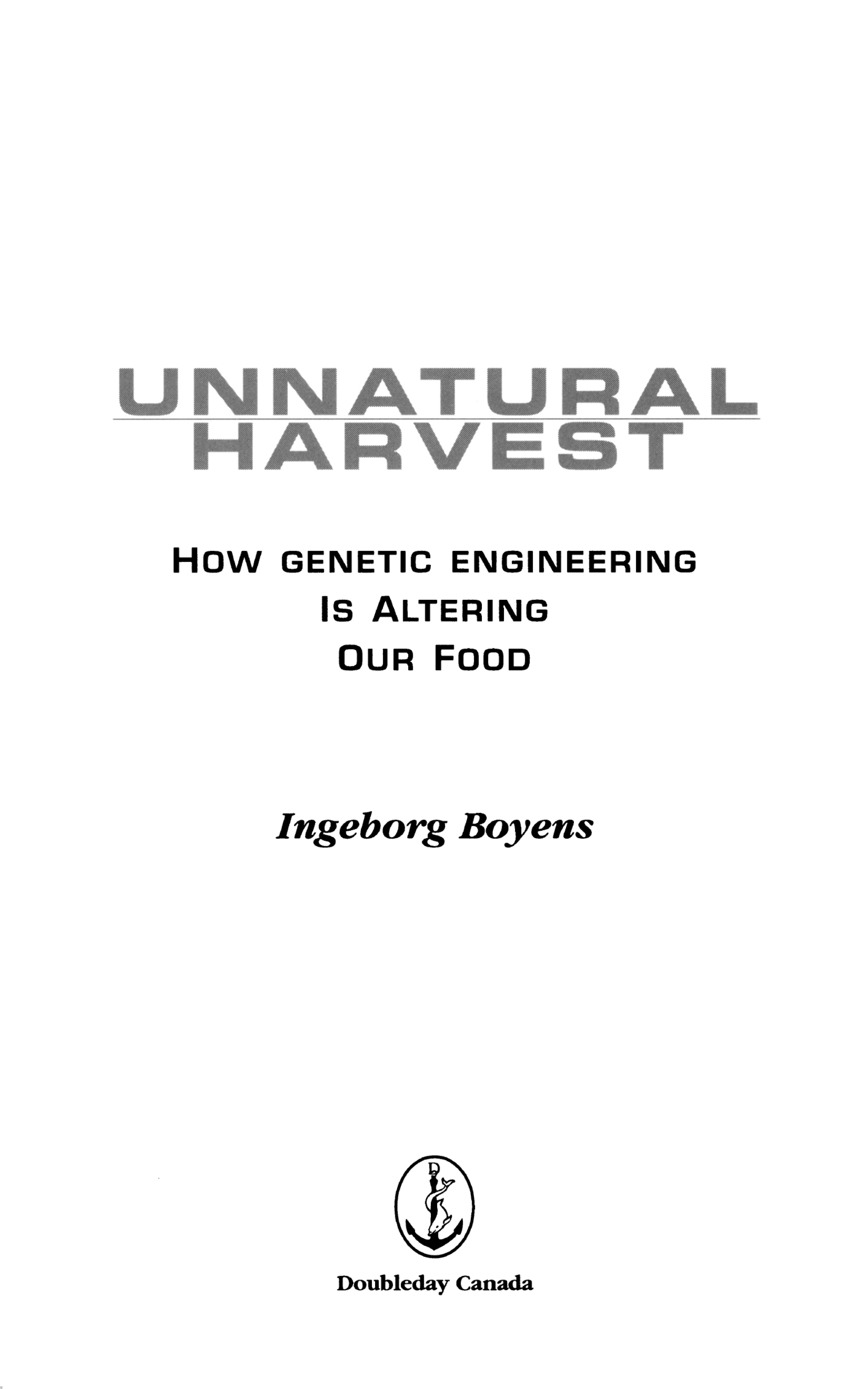It is a daunting challenge to write a bookdoubly so when it is about science and you can not claim a list of doctoral degrees. I am indebted to all those people who accepted the notion that the story of genetic engineering in food is as much a story of ethics and public policy as it is of science.
I am grateful to those who paved the way for this book with their excellent volumes on agriculture, food, and biotechnology. Thanks also to those often unacknowledged people who maintain food-related news services on the internet. Also thanks to Nancy Westaway who helped with research when panic seemed to rule. Offering me valuable interpretations for all this information were Arthur Shafer, Ann Clark, Murray McLaughlin, and many others.
My appreciation goes to the people who shared their thoughts and stories with me in an effort to personalize a sometimes difficult subject. Dot Wilson, Dean Moxham, and Michelle Brill-Edwards are struggling valiantly for their personal and ethical independence in changing times.
Thanks go to the CBC for teaching me that it is not enough for an issue to be important, it also has to be relevant. My colleagues at Country Canada were tolerant of my naivet and supportive of my efforts, regardless of their own opinionsparticular thanks to John Drabble and Nigel Simms for their assistance.
The Manitoba Arts Council financially supported this project. At Doubleday Canada, John Pearce and Kathryn Exner were unflaggingly encouraging. Thanks go to Kathy Vanderlinden, who edited the manuscript.
This book would not have become a reality without the calm support at home of my husband and personal in-house editor, Gregg Shilliday. Thanks, Gregg, for putting up with my often unsolicited observations on food, usually at dinnertime.
Introduction
Science is a first-rate piece
of furniture for a mans
upper chamber,
if he has common sense on
the ground floor.
Oliver Wendell Holmes, 1872
For thousands of years, the worlds food was grown on farms that looked much like my grandfathers homestead. His operation was tinymanageable by his standards, but inefficient by the measure of todays industrial agriculture. The cows all had names; the pigs rooted in the dirt; and the labor force was made up of oft-complaining sons and daughters. Foodthe growing, harvesting, preparing, and eating of itwas a shared obsession. Later, like many of his generation, my grandfather sold the farm and moved to town. Although he still rose at dawn, the telltale line on his forehead marking the boundary between peaked hat and farm sun slowly faded.
In much the same way, the family farm has faded too. More than seventy-five thousand small and medium-sized Canadian farms disappeared from 1976 to 1996. In the United States, the numbers are equally remarkable: in 1917, there were 6.5 million farms; by 1993, there were only about 500,000 farmers still working the land. In the 1970s, U.S. Secretary of Agriculture Earl Butz forecast the future when he told farmers, Get big or get out.
Today, like most of us, I live in the city, far from where food is produced. And also like most of us, I no longer have a personal connection to agriculture. The cycle of food production has become a wonder and a puzzle. With the modern magic of preservatives, refrigeration, and long-distance transport, peaches and tomatoes appear in the supermarket even when a defiant layer of snow blankets the country. It is only occasionally that I recallthrough the hazy fondness of memorythe canning jars filled with pears, crab apples, and peaches lined up in neat rows in the basement coldroom to help us survive the long, hard winter.
On the brink of the new millennium, those of us lucky enough to live in the developed world are denied almost nothing in terms of food. We do not have to sit on a tractor under the unrelenting prairie sun to bring home a bushel of wheat for bread. We do not have to roll up our sleeves on a sweaty August day over a boiling water bath of mason jars. And yet a broad array of exotic foods never seen in our grandparents day is arranged for our easy purchase in the produce aisles of the local supermarket.
In the lexicon of progress, food and farming have become agribusiness. There may have been costs as people abandoned the country for the city, but agriculture has achieved monumental productivity improvements since World War Two. In the early years of this century, living according to the rhythms of the seasons, in watchful apprehension of what nature might deliver, my grandfather was able to support about ten people from the bounty of his farm. One of todays modern North American farms sustains as many as one hundred people. In 1930, it took an hour of farm labor to produce a bushel of grain; in the 1990s, a bushel is generated in less than a minute.
At the same time, food has evolved from a lovingly tended and prepared staple of life into just another packaged commodity. After the losses and the limitations of the war years, a typical supermarket delighted customers by offering them a selection of about a thousand items, most of them fresh, cured, or canned. Today, new food processing technologies have resulted in assembly-line manufacturing on a massive scale. Granola bars, instant energy shakes, dehydrated pasta sauce mixes, and other examples of edible progress now arrive on store shelves as quickly as advertising campaigns can be drafted. In 1995, there were fifteen thousand products to be found in the aisles of a typical Canadian supermarket. American food emporiums boasted even more edible innovationsin 1989 alone, twelve thousand new foods were introduced to the U.S. market.
The fine print on the back of a typical box of todays food lists a string of mysterious artificial ingredients with long chemical namestricalcium phosphate, dipotassium phosphate, diglycerides, silicon dioxide, and of course, the ubiquitous artificial flavors. More and more, the items available to eat are made up of substances that bear only a passing resemblance to traditional foods. We might think a frozen pizza is made of flour from milled wheat, tomato paste from crushed, vine-ripened tomatoes, mozzarella cheese from milk, and sausage from animals. In fact, the flour may be a chemically restructured mix of soy and wheat, the tomato paste may be extended with colored starch, the mozzarella may be a vegetable oil imitation, and the pepperoni may have been formed from textured soy protein.



